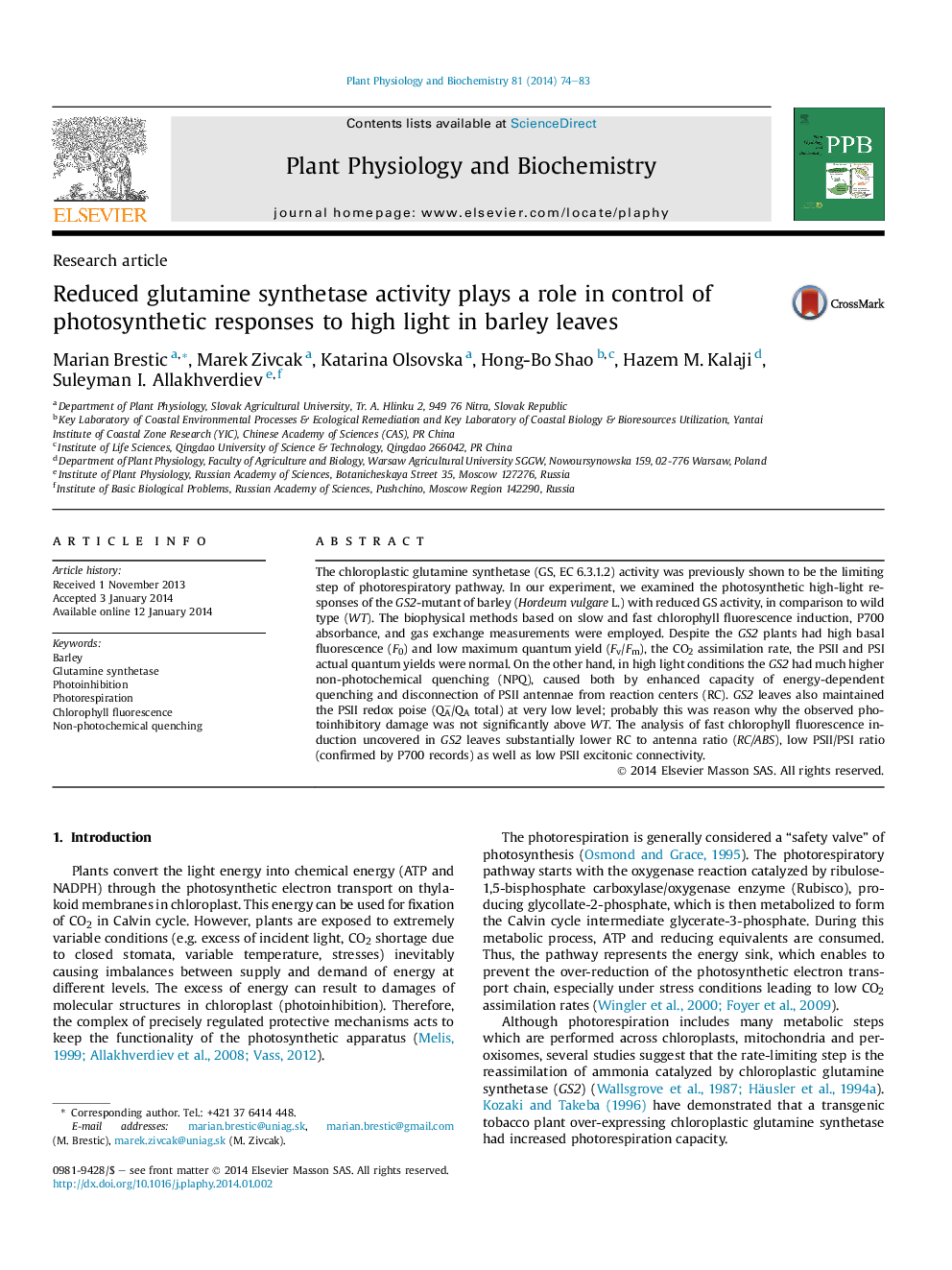| Article ID | Journal | Published Year | Pages | File Type |
|---|---|---|---|---|
| 2015849 | Plant Physiology and Biochemistry | 2014 | 10 Pages |
•The mutation limiting glutamine synthetase activity affected the PSII photochemistry.•GS2 mutant kept low excitation pressure by excessive non-photochemical quenching.•GS2 mutant had low number of PSII reaction centers and low PS II to PS I ratio.•Low excitonic connectivity in GS2 mutant indicated improperly organized PSII antennae.
The chloroplastic glutamine synthetase (GS, EC 6.3.1.2) activity was previously shown to be the limiting step of photorespiratory pathway. In our experiment, we examined the photosynthetic high-light responses of the GS2-mutant of barley (Hordeum vulgare L.) with reduced GS activity, in comparison to wild type (WT). The biophysical methods based on slow and fast chlorophyll fluorescence induction, P700 absorbance, and gas exchange measurements were employed. Despite the GS2 plants had high basal fluorescence (F0) and low maximum quantum yield (Fv/Fm), the CO2 assimilation rate, the PSII and PSI actual quantum yields were normal. On the other hand, in high light conditions the GS2 had much higher non-photochemical quenching (NPQ), caused both by enhanced capacity of energy-dependent quenching and disconnection of PSII antennae from reaction centers (RC). GS2 leaves also maintained the PSII redox poise (QA−/QA total) at very low level; probably this was reason why the observed photoinhibitory damage was not significantly above WT. The analysis of fast chlorophyll fluorescence induction uncovered in GS2 leaves substantially lower RC to antenna ratio (RC/ABS), low PSII/PSI ratio (confirmed by P700 records) as well as low PSII excitonic connectivity.
